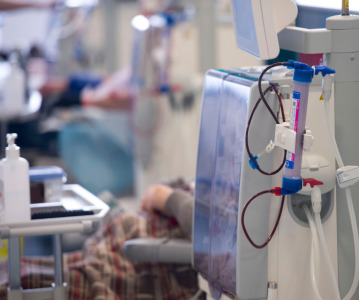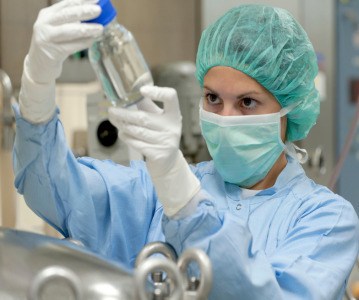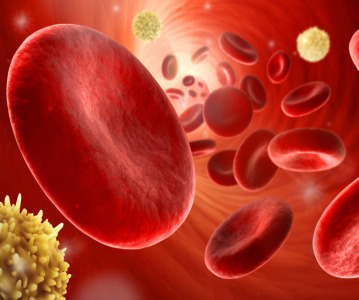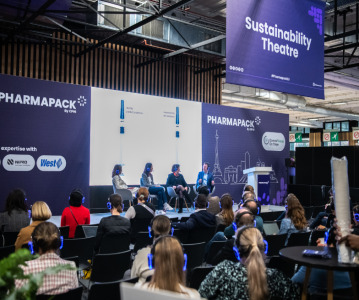China on course for 'massive' bio capacity shortfall

A shortage of qualified personnel may be a drag factor in cell and gene therapies; in China 100,00L of capacity will need to be added every year to meet bio demand.
CPHI Worldwide has released the third part of its annual report focussed on bio in China and advanced biologicals.
The report highlights growing opportunities for CDMOs in cell and gene therapies, as well as the needed capacity expansions to meet China’s burgeoning demand. Two annual report experts, Michael E. Ultee of Ulteemit BioConsulting and Vicky Qing Xia of BioPlan Associates, outline their expert perspectives on the likely opportunities and challenges in the coming 5 years.
A key theme at this year’s BioProduction – which runs alongside CPHI Worldwide and covers the entire spectrum of biopharmaceutical development and production – is the industry-wide focus on increasing productivity and quality. Encouragingly, Ultee forecasts that manufacturing in biopharma is now entering a new age of advanced processes whereby the overall cost of production could potentially begin to fall. He added that in 5 year’s time with the new processes now being applied, “manufacturing will become more efficient and cost savings will be delivered. Furthermore, economic pressure from biosimilars will push manufactures of these types of therapeutics towards lower costs.” In fact, Ultee suggests that many of the manufacturing challenges with biosimilars have been overcome and that hurdles to wider patient access are chiefly due to patent walls and litigation.
In advanced therapies, a lack of cell and gene expertise is now already causing potential issues in the clinical progress of many therapies, and there is a scramble for the most capable development partners, despite many CDMOs investing in capabilities. “There is already a shortage of CDMO services for this type of work. The high valuations shown by recent acquisitions of CDMOs, such as Brammer Bio and Paragon Bioservices, bear this out. I expect the shortage to continue for the next few years until more development and manufacturing scientists are trained in this new discipline and CDMOs expand their offerings,” added Ultee.
The implications of these new targets are that there will be a realignment over the next 1-3 years in the areas of cancer and rare-disease therapies – with a greater focus on cell and gene therapies rather than recombinant proteins.
In her near- and medium-term predictions, Vicky Qing Xia explores the huge changes currently underway in China, with single-use reactors rapidly on the rise. In fact, by 2021 at a CAGR of 16%, the biologics market in China may reach $50bn. Similarly, regulatory reforms – such as the MAH pilot – are seeing a bio services market growing even faster at above 30%, and forecast to reach $1.4bn by 2021. Qing Xia attributes this growth to several advanced players (primarily serving western customers) – notably WuXi Biologics, MabPlex, CMab and JHL biotech.
“The case for single-use bioreactors is particularly strong for two groups: early-stage mAb developers and biologics contract manufacturers. For mAb developers, single-use technology offers the key advantages of less capital investment during the project development stage as well as time-reduction in facility construction. Most mAb developers in China are working on biosimilar/biobetter versions of mAbs against several established targets including TNF-alpha, PD-1, Her-2 or EGFR with usually multiple companies for each target; the time to clinical development, therefore, can mean life or death for a project. Less capital investment during development is also extremely important for the small- to medium-sized biotech companies, as more often than not they are cash-strapped without enough resources for facility construction. With both mAb development and outsourced biomanufacturing on the rise in China, there is no surprise that single-use technology is getting more popular, enjoying double-digit (some even project over 30% CAGR) growth in recent years,” commented Qing Xia.
Qing Xia also believes there may be a good degree of flux in the market predictions, particularly as new products transition between clinical and commercial supply, adding: “Many of the VC-backed developers would seek IPO, and Chinese investors are known to value fixed assets such as land, facility over IP and product portfolio. We see many developers outsource pilot-scale production, but they would then plan to build their own facilities when their project goes to late clinical stage.”
Tara Dougal, Head of Content at Informa, added: “Our experts' analysis shows we are at a significant point for the supply chain, as new technologies help to bring about improved manufacturing processes. It is also a big focus at both CPHI Worldwide and BioProduction this year. Much of our content and, of course, our networking opportunities are designed to empower both exhibitors and attendees to meet partners that will help them prepare and deliver new solutions to help the industry expand in the next few years. In addition, P-MEC is also showcasing all of the global technologies to help deliver new manufacturing methodologies and sustain the growth predicted in contract services for both solid dose and biological drugs.”
Related News
-
News US FDA adds haemodialysis bloodlines to devices shortage list
On March 14, 2025, the US FDA published an open letter to healthcare providers citing continuing supply disruptions of haemodialysis bloodlines, an essential component of dialysis machines. -
News Women in Pharma: Manufacturing personal and team success
Our monthly Women in Pharma series highlights the influential lives and works of impactful women working across the pharmaceutical industry, and how the industry can work towards making the healthcare industry and workplace more equitable and inclusive... -
News Pfizer may shift production back to US under Trump pharma tariffs
At the 45th TD Cowen annual healthcare conference in Boston, USA, Pfizer CEO Albert Bourla outlined the potential for Pfizer to shift its overseas drug manufacturing back to the US as pharmaceutical industry players weigh their options against Presiden... -
News Experimental drug for managing aortic valve stenosis shows promise
The new small molecule drug ataciguat is garnering attention for its potential to manage aortic valve stenosis, which may prevent the need for surgery and significantly improve patient experience. -
News Women in Pharma: Connecting accessible pharma packaging to patients – a Pharmapack Special
Throughout our Women in Pharma series, we aim to highlight how CPHI events encourage discussions around diversity, equity, and inclusion initiatives in the pharmaceutical industry. -
News Vertex Pharmaceuticals stock jumps as FDA approves non-opioid painkiller
UK-based Vertex Pharmaceuticals saw their stock shares soar as the US FDA signed off on the non-opioid painkiller Journavx, also known as suzetrigine, for patients with moderate to severe acute pain, caused by surgery, accidents, or injuries. -
News Trump administration halts global supply of HIV, malaria, tuberculosis drugs
In various memos circulated to the United States Agency for International Development (USAID), the Trump administration has demanded contractors and partners to immediately stop work in supplying lifesaving drugs for HIV, malaria, and tuberculosis to c... -
News 2024 Drug Approvals: a lexicon of notable drugs and clinical trials
50 drugs received FDA approval in 2024. The centre for biologics evaluation and research also identified six new Orphan drug approvals as under Biologics License Applications (BLAs). The following list picks out key approvals from the list, and highlig...
Recently Visited
Position your company at the heart of the global Pharma industry with a CPHI Online membership
-
Your products and solutions visible to thousands of visitors within the largest Pharma marketplace
-
Generate high-quality, engaged leads for your business, all year round
-
Promote your business as the industry’s thought-leader by hosting your reports, brochures and videos within your profile
-
Your company’s profile boosted at all participating CPHI events
-
An easy-to-use platform with a detailed dashboard showing your leads and performance







